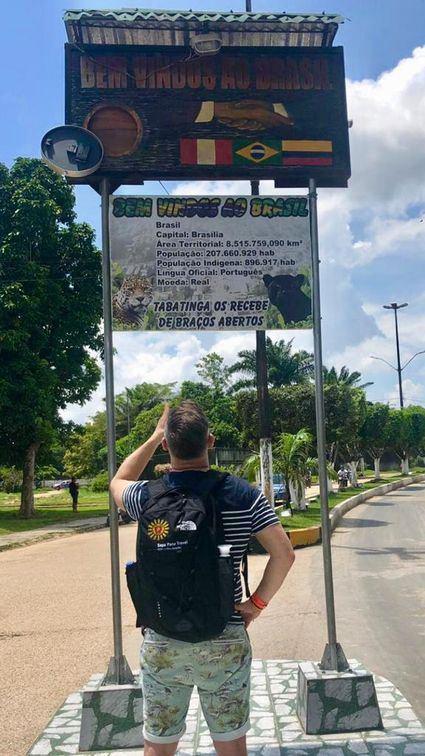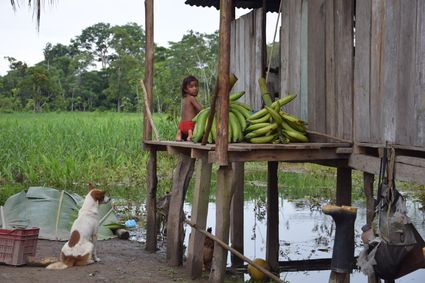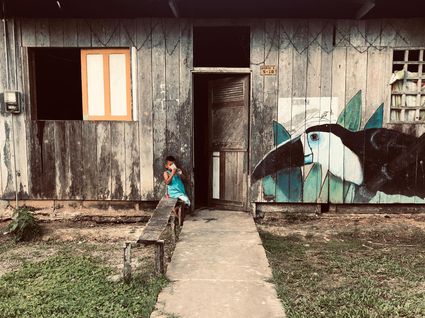The Amazon in Colombia
It finds its origin in the high mountains of the Peruvian Andes, before flowing into the Atlantic Ocean after 6400 kilometres. This makes the Amazon the second longest river in the world. More than 300 indigenous cultures consider the Amazon basin as their home and more than 50 of these cultures have never been in contact with the western world. Ever since I was a child, I consider the Amazon to be something mystical, something magical and I don't want to miss an opportunity to visit this nature reserve.
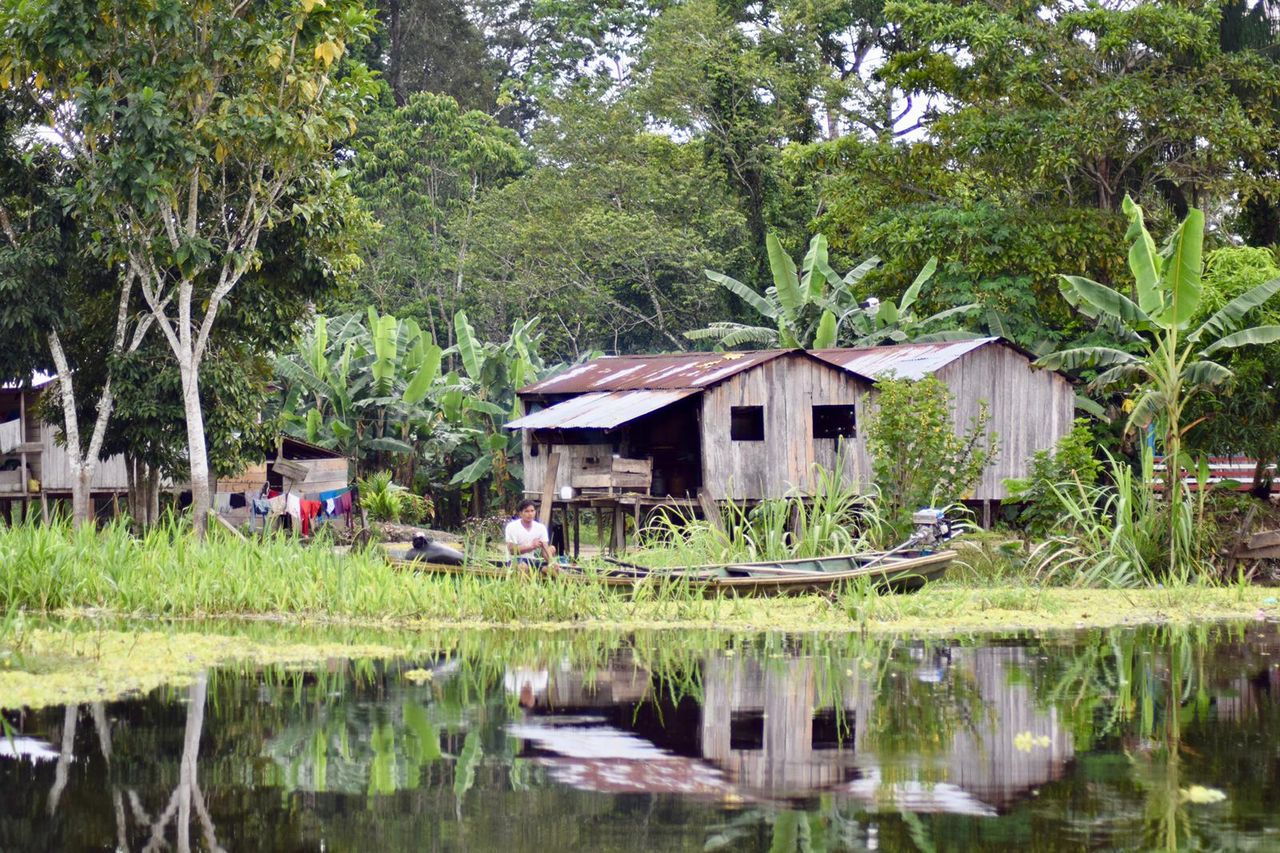
Indigenous communities know no borders
From the Colombian capital I travel to Leticia. Leticia is with over 40,000 inhabitants the most important centre in the Colombian Amazon and the town can only be reached by water and air. Leticia is located in the far south of the country, on the border triangle that Colombia shares with its neighbouring countries Peru and Brazil. The region is not only important for its flora and fauna, but also from a cultural point of view. Many indigenous cultures live in this region. This is also the reason that you will not find passport controls when you cross the border here. For the indigenous communities these borders simply do not exist, I am told, when I visit the Peruvian community Natamü on the southern side of the Amazon. The members of this community belong to the Ticuna culture. This is the largest indigenous Amazon culture of both the Colombian, Brazilian and Peruvian parts of the Amazon. From the village we continue by boat to a side branch of the Amazon. Since the end of 2018 there is a simple lodge here that is run by the members of Natamü community.
An exuberance of scents, colours and animal sounds
During the first part of our trip that takes us over the main artery of the Amazon, we see some pink river dolphins appear. Arriving at the side branch, we change to a smaller canoe that takes us further to the lodge. After half an hour of sailing we arrive, and we are only surrounded by the tropical rainforest. It is an exuberance of scents, colours and animal sounds. The bustle of the main river is far behind us.
During our stay members of the Ticuna culture take us on canoe trips and walks through the rainforest, where they tell us more about the secrets of the jungle from the enormous knowledge of plants and animals that has been passed on from generation to generation. The rainforest has dangers with poisonous plants and animals that can kill you in no time. On the other hand, you'll find the healthiest nutrients here and the Amazon basin counts as a living pharmacy. This has always fascinated me enormously and I believe that we should do everything we can to protect the Amazon basin and its indigenous cultures. If the rainforest were to disappear, enormously important natural resources would be lost and with the disappearance of the indigenous cultures, the knowledge about this nature would also be lost.
When the sun sets, we take another boat trip on the river. In the swamp and all around us, countless lights twinkle due to tiny luminous insects. A breathtaking light show, like I have never seen before. Tired but satisfied I dive under my mosquito net and fall asleep to the sounds of the jungle.
From fairground attraction to breathtaking scenery
After a delicious breakfast, we travel back to the main branch of the Amazon. We sail over the river in an easterly direction to Puerto Nariño. Before we arrive here, we make two more stops. At the first one I don't want to stand still for too long. We moor at Isla de los micos, a kind of monkey shelter with overfed monkeys. Afterwards the fairground attraction is concluded with a dance by an indigenous population group. In my opinion this doesn't give you a good idea of what the Amazon has to offer. Luckily, we travel on quickly to visit the Canaloa jungle lodge. This intimate resort is secluded on the banks of the Amazon. The hustle and bustle of sailing boats, like you find at Leticia and nearby villages, is hard to find here. When we moor at the small jetty we are enthusiastically welcomed by Marlene and Diego Samper. This couple is originally from Bogotá but have been living in the Amazon for over 30 years.
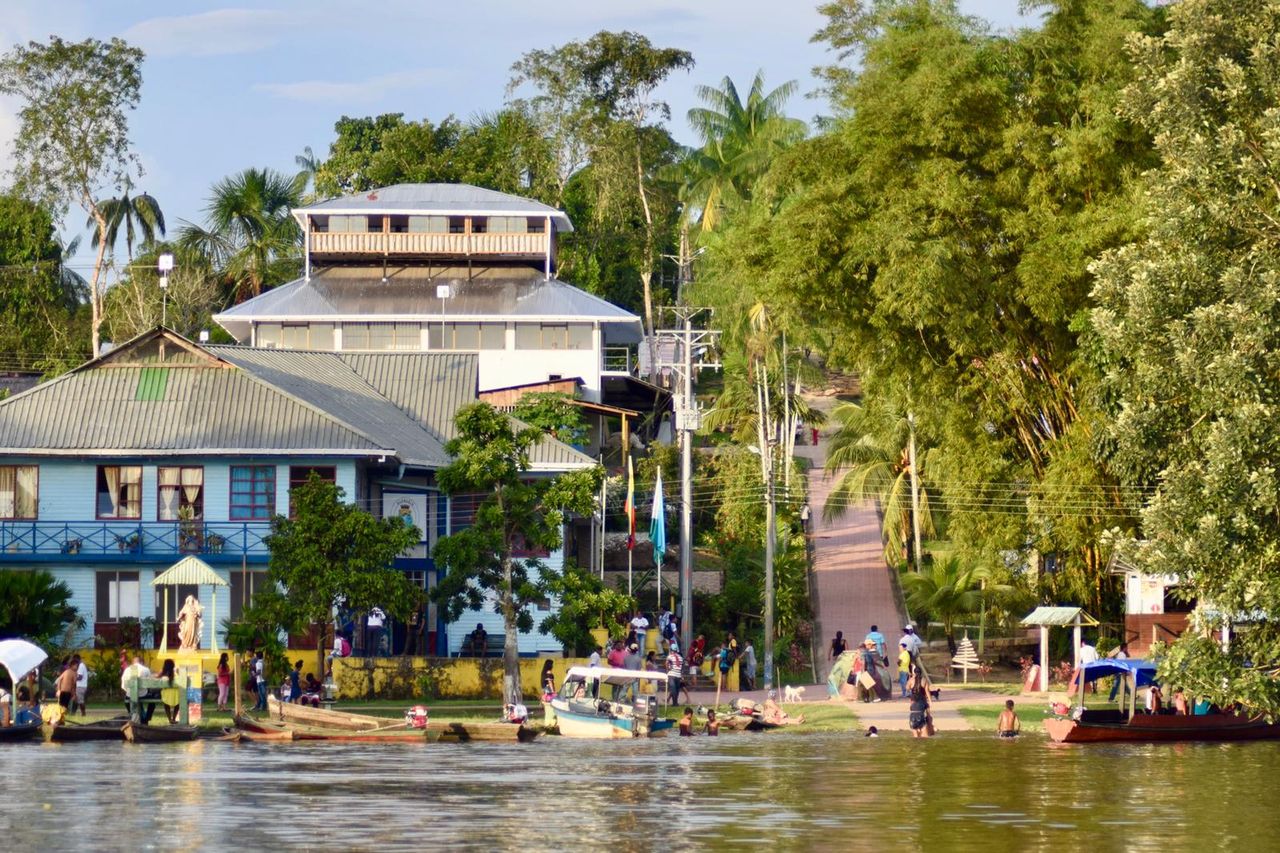
At the end of the afternoon we arrive at Puerto Nariño. This small town is after Leticia the most important place in the Amazon, but actually it is no more than a village. It is a pleasant place on the Amazon, where you won't see any cars or scooters. There are two tractors in the village, with which heavy things are transported. Outside the village everything goes on foot or by bike. The bank counts as the heart of the village, a lawn with a sports field, where the locals come together to chat, play sports or sit in the sun. The setting sun colours the scene in a golden glow. Solar energy is used as much as possible in the village. There is a small water purification plant, so that plastic water bottles can be eliminated as much as possible. People here live from tourism and fishing. In the afternoon we make a boat trip to the nearby Tarapoto lake. The goal is to spot pink river dolphins. Unfortunately, we don't see any, but the surroundings are beautiful.
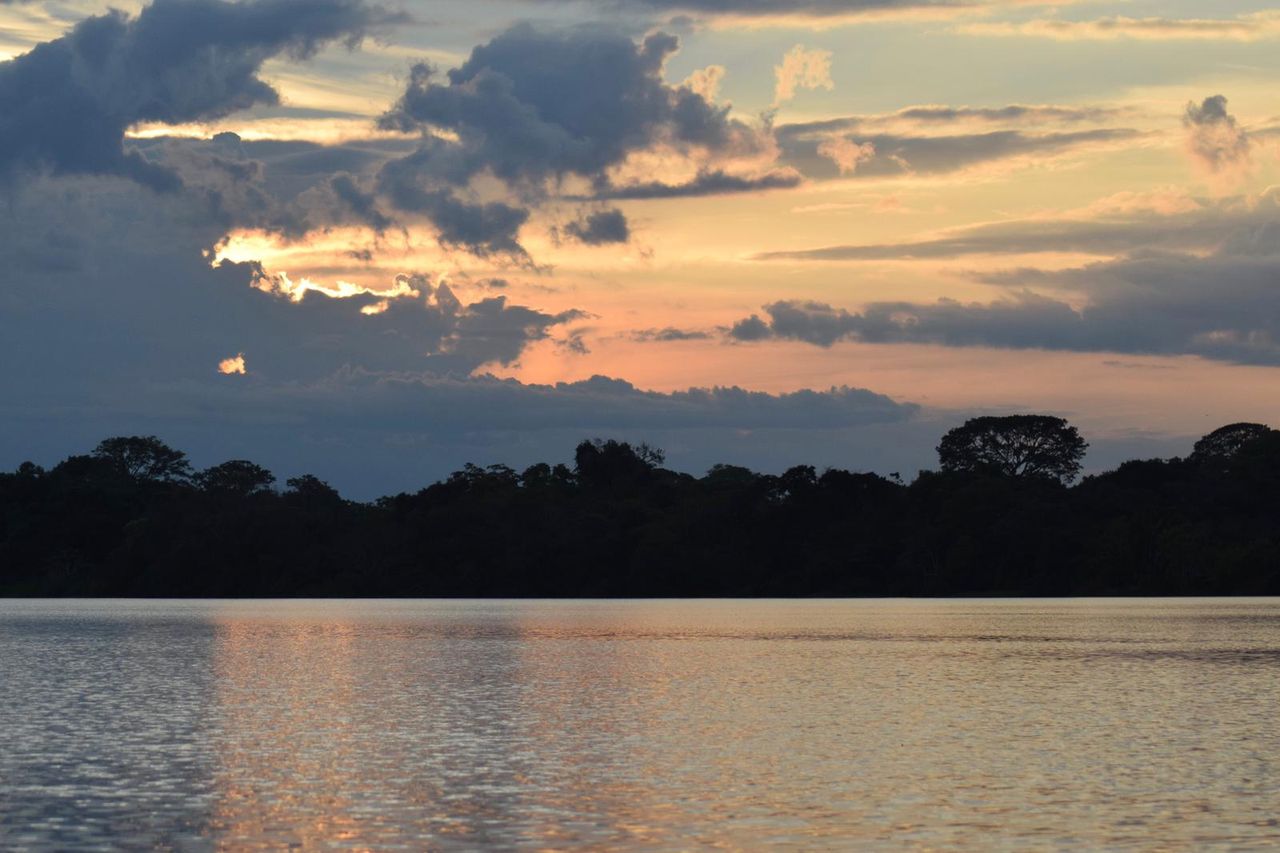
The importance of the Amazon and its indigenous cultures
The next day we travel back to Leticia, where another special day awaits us. Rafael Clavijo of Reserva Ecologico Mundo Amazonico welcomes us enthusiastically. With contagious enthusiasm he tells about the park and the mission of his family. After Aná Maria Pardo, Rafael's mother, moved with her family from the department of Santander to Leticia, she was impressed by the enormous natural and cultural richness of the region. She immediately saw the importance of the Amazon rainforest and the knowledge the indigenous cultures have about it. To preserve and share this knowledge, Rafael's parents started Reserva Ecologico Mundo Amazonico in 1976. In my opinion it is one of the best parks/interpretation centres of its kind.
The park is a huge botanical garden in which you can take various themed walks. For example, you can take a walk where you get explanations about medicinal plants. We made a culinary walk where we chose the ingredients with which we later made a local traditional dish. The walks are guided by guides who all come from different indigenous communities.
In the park a number of traditional houses have been reconstructed and in one of these houses we are welcomed by señor Antonio Bolivar Salvador, tribal elder of the Tocaima culture. His culture is threatened with extinction, just like other indigenous cultures from the Amazon. Because with the extinction of these cultures a lot of knowledge about the Amazon is lost, Antonio is doing everything he can to share his knowledge. In inspiring sessions with tourists and students, he tells his life story about the cultures of the Amazon.

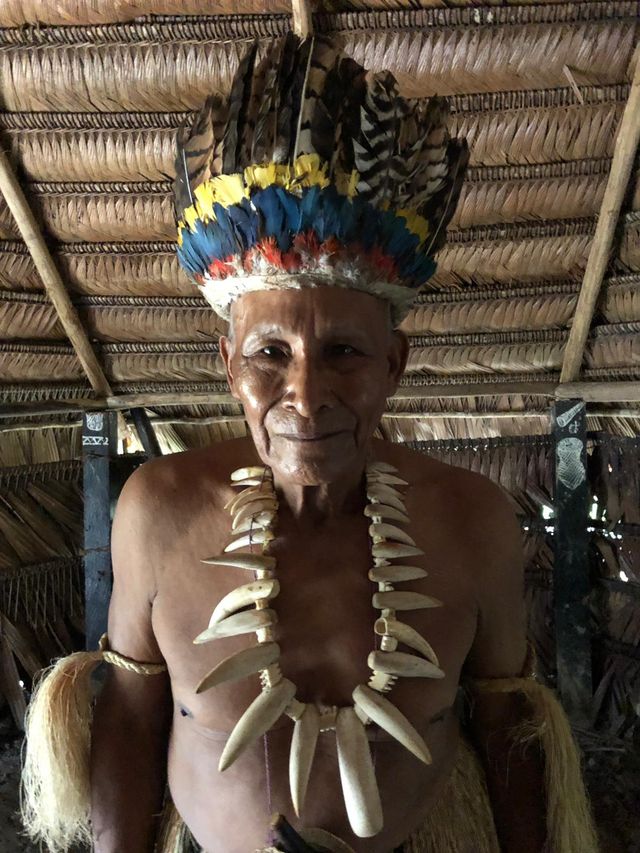
Ambassador of the Colombian Amazon
The visit to Reserva Ecologico Mundo Amazonico marks the end of my journey through this special area. In my opinion, the Amazon basin is one of the most important areas in the world. Not only because of the biodiverse flora and fauna, but also because of the indigenous cultures. We must protect this region as much as possible. With responsible tourism and the generation of ambassadors we hope to make a contribution. It is important that we offer a deeper experience that goes beyond a traditional dance and an island full of monkeys. Fortunately, I have seen several initiatives. They have made a deep impression on me and I know that they will touch other travellers as well.
Travel through Colombia?
Would you like to make a trip through Colombia yourself and are you curious about the possibilities? Then take a look at the travel itinerary through Colombia and the Amazon that we have put together for inspiration. You can book this trip directly, but we also like to create a personal programme based on your wishes and ideas.
Do you have a question? Please feel free to contact us. Call +31 73 610 62 04 or send an email to info@sapapanatravel.nl. We are happy to help.

